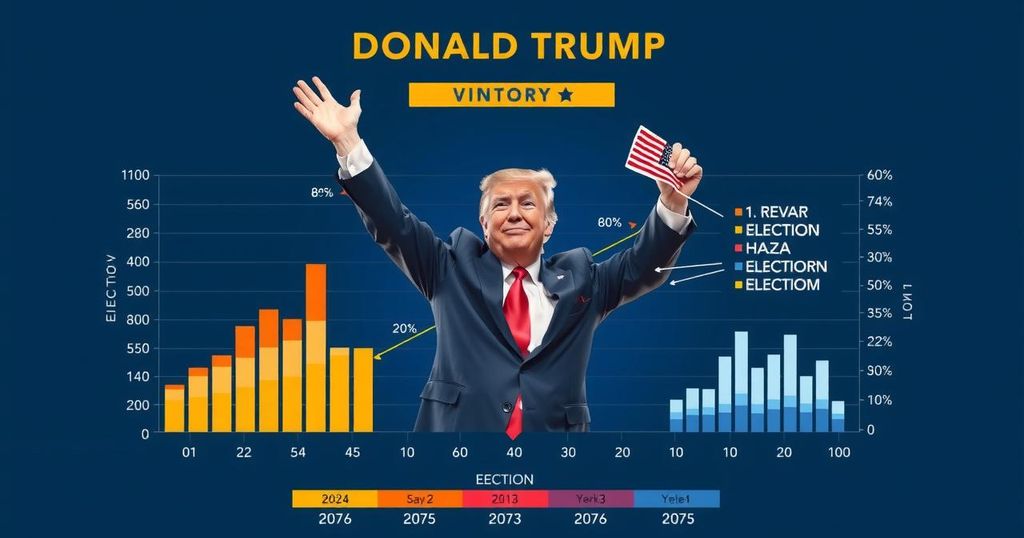economics
Politics
ASIA, BIDEN, CANADA, DONALD TRUMP, ECONOMICS, ELECTION, EUROPE, FRANCE, GERMANY, HARRIS, INFLATION, ITALY, JAPAN, JOE BIDEN, KAMAL, NORTH AMERICA, POLL RESULTS, PRESIDENTIAL CANDIDATES, PRESIDENTIAL ELECTION 2024, UNITED KINGDOM, UNIVERSITY OF, UNIVERSITY OF MICHIGAN
Fatima Khan
0 Comments
Understanding the Factors Behind Donald Trump’s Election Victory
Donald Trump’s election victory is attributed to Biden’s low approval ratings and unfavorable consumer sentiment due to inflation. Kamala Harris showed slight demographic improvements but fell short compared to Trump’s wider support gains among various groups, including Latino men and young voters. Trump’s wins in suburban areas also curtailed previous Democratic advantages. However, narrow victory margins prompt caution as voters may revert in future elections, emphasizing the unpredictable nature of electoral trends.
In examining the reasons for Donald Trump’s election victory, it is crucial to understand the political and socio-economic landscape leading up to the event. Vice President Kamala Harris found herself in a challenging position, inheriting an unpopular administration marked by President Biden’s low approval rating of 39%. Historically, presidents with an approval rating above 50% have succeeded in reelection campaigns, while those below have not. The economic climate, particularly 40-year-high inflation, contributed significantly to public sentiment against the Biden administration. The University of Michigan’s consumer sentiment survey indicated a rating of 70.1, well below the 82 threshold that typically signifies reelection success for incumbent presidents. This erosion of popularity was not only a local phenomenon – it reflected a global issue, impacting numerous leaders within the G-7 nations, all of whom were experiencing approval rating challenges. Despite improvements in some demographic segments, Harris’s overall performance compared to Biden’s yielded limited gains. Exit polls suggested that while she secured slightly more support from certain college-educated voters and Black women, this was not sufficient to stave off Trump’s appeal across a wider array of voter demographics. Notably, Trump made significant strides among Latino men, who shifted their support from Biden to him by 35 points, a remarkable turnaround. Furthermore, Trump’s support among young voters aged 18 to 29 also improved considerably, marking the best performance for a Republican among this group in two decades. Suburban areas, previously leaning toward Biden in 2020, also saw a notable shift where Trump gained a four-point advantage. The influence of abortion rights on voter preferences proved less effective during this election cycle than anticipated, evidenced by an even split among abortion-rights voters between Harris and Trump. However, Republicans should exercise caution in their optimism following this victory. The narrow margins in the popular vote and battleground states indicate that this election did not signify an overwhelming mandate. Historical patterns demonstrate that voters can exhibit unpredictability, having flipped the presidency five times and the Senate seven times since 2000. Therefore, while Trump may have secured the presidency, it remains uncertain whether the voters fully endorse all of his proposed policies. A potential misalignment with voter expectations in the coming term could present Democrats with an opportunity to regain traction in future elections, particularly if the Republicans do not fulfill their promises or if circumstances deteriorate under their governance.
The article delves into factors influencing Donald Trump’s recent election victory, particularly in the context of the 2024 campaign led by Vice President Kamala Harris. It highlights the historical significance of presidential approval ratings and consumer sentiment as indicators of electoral success, drawing lessons from previous elections and the current socio-economic climate characterized by inflation and shifting public opinions. The analysis emphasizes demographic changes in voter support for Trump compared to Harris, demonstrating shifts in trends among traditionally aligned voter segments. Ultimately, it cautions against complacency, indicating how electoral dynamics can change over time.
In conclusion, Donald Trump’s victory can be attributed to various factors including low approval ratings for President Biden, the significant impact of inflation on consumer sentiment, and Trump’s enhanced appeal across diverse voter demographics. Nonetheless, Republicans must remain vigilant, as the electorate’s oscillating preferences underscores the potential for future shifts in political alignment. If Trump cannot meet voter expectations in his upcoming term or navigate unforeseen challenges, the opportunity for Democrats to regain relevance in future elections remains plausible.
Original Source: www.usnews.com




Post Comment